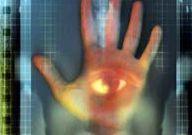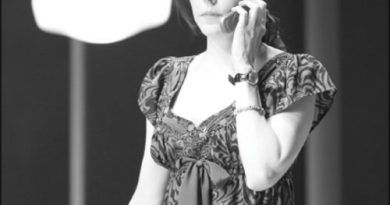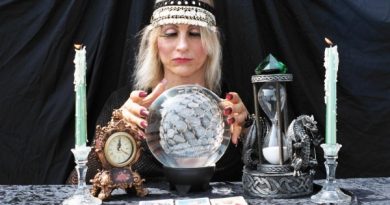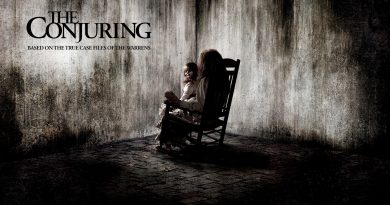PSI-STARS AND SCEPTICS
The writer G K Chesterton once remarked that when man ceases to believe in God he will not believe in nothing. He will believe in anything. Such a statement as the above has been used ruthlessly by many sceptics to pour scorn on the paranormal. However, in many cases we can see this as justified. Take, for instance, the infamous case of Lord Dufferin.
LORD DUFFERIN
This one time British ambassador to France often told a story of a strange and unexplained dream. Related by researcher Camille Flammarion, Dufferin was awoken one night and went to the window. Outside, he saw a man with a hideous face carrying a coffin.
Many years later, he was about to enter a lift in a Paris hotel when he saw the hideous face, belonging to the lift attendant. He didnt take the lift, and moments later it plummeted, killing all inside.
The entire story is, of course, bunkum. There WAS a lift accident in the mentioned hotel, but Dufferin was not in France at the time. Flammarion should have checked this out; as
well as the playful wink Dufferin gave every time he related the story.
DAWN OF THE SCEPTIC
To the sceptic, this is good. Indeed, a specific organisation exists to debunk the entire field of the paranormal and unexplained mysteries. This is the Committee for the Scientific Investigation of Claims of the Paranormal, or CSICOP. As to its scientific reasoning, their intention is to investigate CAREFULLY the extraordinary claims of true believers and charlatans of the paranormal.
Some sceptics have gone to extraordinary lengths to debunk the paranormal. Take magician James Randi who has offered a million dollars to anyone who can prove the existence of the paranormal.
His money will never be claimed for Randi understands an important point concerning science – the fact that science never deals in absolute proof. Rather, science is a consensus of opinion that seems to fit the universe at a particular time.
It is a means of human understanding that seems to work, but can never be absolutely proved. And if hard physics, chemistry and biology can never be absolutely proved, the paranormal has no chance.
INVESTIGATING PSYCHICS
Other organisations do, however, attempt to prove the existence of the paranormal. Most famous of these is the Society for Psychical Research, or SPR. Created in 1882 in London under the auspices of physicists Sir William Barrett and Sir Oliver Lodge, it initially investigated mediums in the field, inviting much ridicule.
Typically, when leading member, Frederic Myers, died in 1901, a number of members formed the Sidgwick Group to contact him – Myers had declared his intention to contact THEM from beyond the grave. Known as the Cross-Correspondence case, many claimed to receive messages from him, but in the main the communications are trite and unbelievable.
The SPR eventually became more scientific, doing work in the laboratory on ESP and PK, or psychokinesis, with an American branch set up under psychologist William James. Indeed, it was James who defined what proof should be in the subject.
As he said in 1890: To upset the conclusion that all crows are black, there is no need to seek demonstration that no crows are black; it is sufficient to produce one white crow; a single one is sufficient.
To William James a white crow a person with such obvious paranormal and unexplained powers would prove the existence of the paranormal without any doubt. However, several candidates have existed. Perhaps we should see if they perform satisfactorily.
EMANUEL SWEDENBORG
One outstanding candidate was Swedish scientist, Emanuel Swedenborg. Born in 1688, he entered university at eleven, excelled in many fields, and traveled widely throughout Europe. However, at fifty six, his disillusionment led to a dream in which he claimed to travel to the spiritual realm. The precursor of the Spiritualist movement, he went on to commune with spirits and discuss philosophy with entities such as Plato and Jesus.
Many clairvoyant instances are attributed to him, such as a vision he had of a fire in a neighbours home when he was three hundred miles away in Gothenburg.
The fire was later confirmed. With such talents Swedenborg built a whole new spiritual philosophy in which he argued God required us to exist in the physical and spiritual worlds at the same time.
EDGAR CAYCE
A further white crow candidate can be found in Kentucky salesman, Edgar Cayce, born in 1877. Persistent illness caused him to stop working and he attempted hypnosis as a cure. The hypnotist asked him to describe what unconscious thought was the root of his problem.
Cayce was amazed to discover he could answer. Perfecting the ability, he went on to be known as the Sleeping Prophet, offering as many as 30,000 trance diagnoses during his lifetime.
Setting up the Association for Research and Enlightenment in 1928 in Virginia, Cayce needed only a name and address to achieve diagnosis and suggest treatment. Thousands considered he had got it just right.
A believer in reincarnation, he considered illness to be caused by deed or emotion in past lives. He himself claimed many past lives, one pre-dating Adam and Eve and another on the lost island of Atlantis.
Edgar Cayce died of exhaustion in 1944, lauded as a great psychic. But how do Cayce and Swedenborg rate in terms of offering real proof of the paranormal? Sadly, not very well, as far as the sceptics are concerned. Rather, both characters were nothing more than clever charlatans who duped people by the hundred.
GERARD CROISET
But a much more convincing white crow appeared in the person of Dutch clairvoyant Gerard Croiset. Born in 1909, he began having visions at six. However, it was not until 1935 that the future healer and psychic detective was introduced to Spiritualism.
Finding his vocation, in 1945 he met researcher Willem Tenhaeff from Utrecht. Testing his abilities, he declared Croiset the most gifted psychic he had ever met, and introduced him to police work.
By the time of his death in 1980, Croiset had become deeply respected for his abilities, for which he never charged. Even police forces became convinced that his visions of the location of missing people were accurate.
Indeed, in one case from 1959, he correctly described the location of a professors missing daughter from three thousand miles away.
URI GELLER
Perhaps the most infamous white crow candidate is Uri Geller. Discovered in 1971 in a Jaffa disco bending keys by stroking them, researcher Andrija Puharich took Geller to Europe and America.
At the Stanford Research Institute he was tested by parapsychologists Russell Targ and Harold Puthoff, scoring high in ESP tests. However, it was his ability to bend spoons which guaranteed his fame; this, and his ability to act as a catalyst, causing paranormal activity throughout society whenever he appeared on television.
Geller was nearly destroyed by James Randi, who invited him to perform in front of reporters. Agreeing, Randi went on to replicate all his abilities by trickery. But due to his high profile, and that of the other white crow candidates we have met, it is impossible to comment further on their talents.
CONTROVERSY
In one sense, this is a problem concerning research. But perhaps the most important element to remember here is that psychic superstars and high profile cases soon become impossible to deal with rationally. Claim and counter claim preclude common sense.
But they are important in that they highlight phenomena happens all the time to other, unknown people who have nothing to gain from what happens to them except ridicule – a fact that should work in their favour concerning their validity.
Yet as I pointed out with CSICOP, sceptics are not interested in valid research. They only want to debunk, for the simple fact is, they believe the paranormal would disprove their worldview if accepted.
Which is, I suppose, the most ridiculous sceptical claim of all. Our worldview is based on what science says about the world at this time. Tomorrow, that view could change from within science itself.
A worldview is, in other words, in a constant state of transition, with assumptions based on the data as presently understood being the only validity to that worldview. Hence, in trying to cast scientific theory in stone, sceptics are the real anti-scientists. Not the researchers in the paranormal.
(c) Anthony North, February 2008



